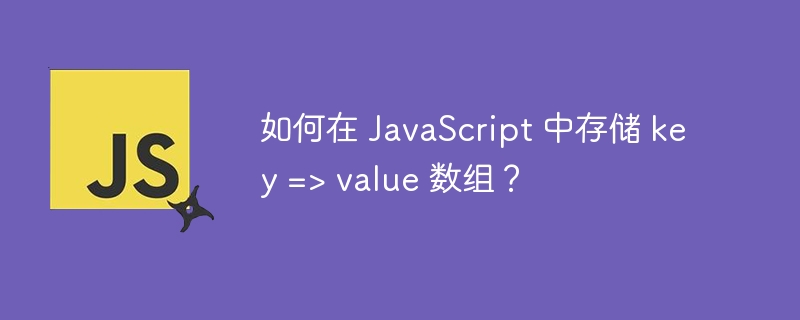

Sometimes, we need to map a key to a specific value using some data structure in JavaScript. For example, it is very useful to store user details in key-value pairs in JavaScript.
We can use different data structures, such as objects or maps in JavaScript, to store data in key-value format.
In JavaScript, objects allow us to store data in key-value format. We can use keys and objects to get data from objects.
Users can use objects in JavaScript to store key-value pairs according to the following syntax
let object = {};
object[key] = value;
In the above syntax, we create an empty object. Additionally, we store the value of a specific key in the object
In the example below, we create a keysArray containing numbers. valueArray contains different strings representing numbers.
After that, we use a for loop to traverse the keysArray. We get the keys from the i-th index of keysArray and the values from the i-th index of valuesArray. For each key, we store the value in the object.
Finally, we print all the keys and values of the object.
<html>
<body>
<h2>Using the <i> objects </i> to store a key => value pairs in JavaScript.</h2>
<div id = "output"> </div>
<script>
var output = document.getElementById('output');
let keysArray = [1, 2, 3, 4, 5, 6];
let valuesArray = ["one", "two", "three", "four", "five", "six"];
let object = {};
for (let i = 0; i < keysArray.length; i++) {
object[keysArray[i]] = valuesArray[i];
}
for (let key in object) {
output.innerHTML += "Key - " + key + " , value - " + object[key] + "<br>";
}
</script>
</body>
</html>
We can also use mapping to store data in key-value format. Map class contains set() method to set data, taking key and value as parameters. Additionally, the map class contains the get() method, which takes a key as a parameter and returns the mapped value.
Users can use mapping to store key-value pairs in JavaScript according to the following syntax.
let mapData = new Map(); mapData.set(key, value)
We used the Map() constructor in the above syntax to create a new map object. Additionally, we use the set() method to set keys and values.
In the example below, the mapKeys array contains numeric strings. We iterate over the array and set the key value pairs into a map. In the for loop, we use the set() method to set the key value in the map. Additionally, we passed the key from the mapKeys array as the first parameter and the index as the second parameter.
<html>
<body>
<h2>Using the <i> mapData </i> to store a Key => value pairs in JavaScript.</h2>
<div id = "output"> </div>
<script>
var output = document.getElementById('output');
let mapKeys = ["one", "two", "three", "four", "five", "six"];
// Creating the new map
let mapData = new Map();
for (let i = 0; i < mapKeys.length; i++) {
mapData.set(mapKeys[i], i)
}
for (let mapKey of mapData.keys()) {
output.innerHTML += "mapKey - " + mapKey + " , value - " + mapData.get(mapKey) + "<br>";
}
</script>
</body>
</html>
The array.reduce() method converts an array into a single element by reducing the array. We can use the reduce() method to convert the entire array into a single object by storing the array data inside the object in key-value pair format.
Users can use the array.reduce() method according to the following syntax to store array data in objects.
let object = arrayOfValues.reduce((obj, element, index) => {
obj[index * 2] = element;
return obj;
}, {})
We initialized the object using {} (empty object) in the above syntax. We store each element of the array in an obj object and return it from the array.reduce() method.
In the example below, we have an arrayOfValues variable that contains different programming languages in string format. We have converted the array to object format, which stores array data in key-value format.
In the array.reduce() method, the obj object contains the key value updated in the last iteration. In the current iteration, we use index *2 as the key and the array element as the value of the object element. After that, we return obj.
<html>
<body>
<h2>Using the <i> Array.reduce() method </i> to store a key => value pairs in JavaScript.</h2>
<div id = "output"> </div>
<script>
var output = document.getElementById('output');
let arrayOfValues = ["TypeScript", "JavaScript", "ReactJS", "NextJS", "Python", "C"];
let object = arrayOfValues.reduce((obj, element, index) => {
// store element to object
obj[index * 2] = element;
// return updated object
return obj;
}, {})
for (let objKey in object) {
output.innerHTML += "Key - " + objKey + " , value - " + object[objKey] + "<br>";
}
</script>
</body>
</html>
We use map, object and array.reduce() methods in JavaScript to store data in key-value format. Maps are the best way to store data in key-value format.
The above is the detailed content of How to store key => value array in JavaScript?. For more information, please follow other related articles on the PHP Chinese website!




